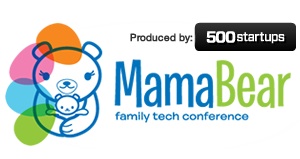 The Spark of Genius Series is made possible by MicrosoftBizSpark. Each post highlights a unique feature of a startup. If you'd like your startup considered for inclusion, please see the details here.
The Spark of Genius Series is made possible by MicrosoftBizSpark. Each post highlights a unique feature of a startup. If you'd like your startup considered for inclusion, please see the details here.

Name: AppAide
Quick Pitch: Help users discover trending apps in real time.
Genius Idea: AppAide highlights apps based on how often they're used rather than the number of times they've been downloaded.
When an iPhone user wants to browse for apps, he or she will typically visit the iTunes App Store, look through a list of the most downloaded apps and choose one that ranks high on the list. In part, this is because we assume the amount of times an app has been downloaded speaks to its quality. However, there are plenty of apps that may be downloaded and used only once, or else that may just be hidden gems in the App Store.
That's where AppAide comes in. This application hopes to surface some of the more overlooked apps in the App Store by tracking the apps that are actually being used by people in real time. The free app monitors the apps that its users engage with, and uses this information to reveal which apps are trending in the AppAide community.

"I realized that it was really hard to figure out what app everyone was using in real time out there," Barbierri told Mashable. "People were making suggestions, but there wasn't really a way to know."
AppAide was released at the end of July and has since been downloaded more than 3,000 times, according to Barbierri. The app received a useful update earlier this month that lets users browse trending apps by categories like books, social networking and random. AppAide is only available for iOS right now, but the team plans to release an Android version near the end of this month.
With more than 700,000 apps in Apple's App Store alone, the need for better app discovery services has never been higher.
Earlier this year Apple acquired the app discovery engine Chomp which "learns the functions and topics of apps, so you can search based on what apps do, not just what they're called." Then there are other services like Quixey, which gathers data from blog posts, tweets and more to provide more details about what exactly an app can do.
While AppAide is certainly not the only app discovery service out there, it does stand out for its ability to potentially locate exciting lesser-known apps that are actually being used right now.
Would you use AppAide to search for apps to download? Tell us in the comments.
Images courtesy of AppAide
Series presented by Microsoft BizSpark












 The internet economy may be one of the brightest spots in today's global economy, but the hits taken by shares of publicly-traded prominent internet brands like Facebook, Zynga and Groupon has definitely had an impact on venture backed companies, many of which have had and will have a more difficult time convincing investors that they're worth as much as they might have been able to convince them they're worth a couple of years ago.
The internet economy may be one of the brightest spots in today's global economy, but the hits taken by shares of publicly-traded prominent internet brands like Facebook, Zynga and Groupon has definitely had an impact on venture backed companies, many of which have had and will have a more difficult time convincing investors that they're worth as much as they might have been able to convince them they're worth a couple of years ago.






















 In our newly released
In our newly released 
 Most people know Microsoft's
Most people know Microsoft's  The upcoming iOS title God of Blades asks players to venture to their local libraries to unlock better items in the game.
The upcoming iOS title God of Blades asks players to venture to their local libraries to unlock better items in the game. 


.jpg)

